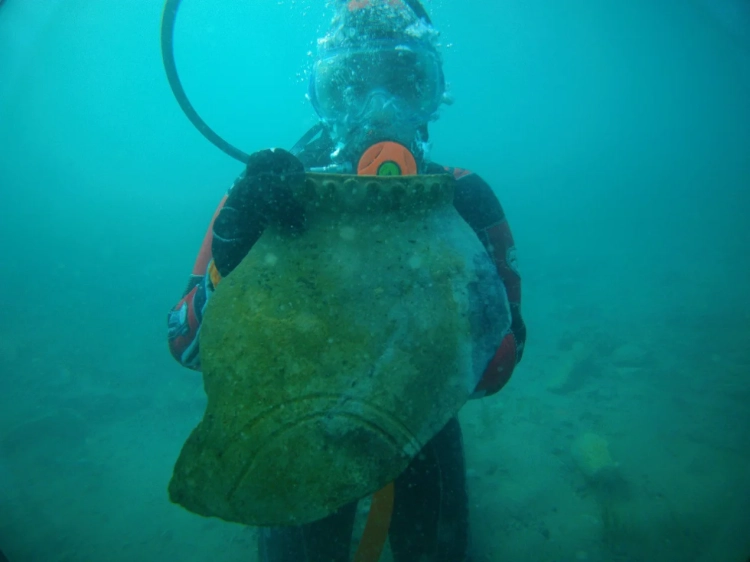
On the Semantics of Ancient Images of Human Body Parts from the Kurkat Crypts
In the work of A.H. Bernshteyn - a luminary of Central Asian archaeology, the semantics of objects has occupied a significant place in Kyrgyzstan. Over the last fifty years, about three dozen votive finds have been discovered. For example, a mysterious hand amulet was first found in the Kenkol burial ground. Later, similar items were found by Yu.D. Baruzdin during excavations of the Kаra-Bulak and Turatash burial grounds, and by G.A. Brykina in the Tashravat and Kairagach burial grounds. Currently, every field season, researchers are obtaining a large number of finds with clear signs of human body parts from the regions of Southwestern Fergana, closely adjacent to Kurkat, as well as from the Talas Valley and other areas of Northern Kyrgyzstan, which bear a striking resemblance to what we have discovered in the Kurkat crypts. However, the semantics of these and other finds remains outside the purview of researchers, while data from written sources and ethnographic materials allow for a detailed interpretation of these amulets.
Kulichki – pendants. A total of seven specimens have been discovered in the Kurkat crypts. Of these, five come from crypt IX.
The seven pendants are cast from high-quality bronze in the shape of the elbow part of the arm with fingers clenched into a fist, the thumb pressed against the index finger. Many of the pendants have a closed ring at the wrist, imitating a bracelet. The forearm is topped with a miniature loop or perforation. The length of each kulichok is 10 mm, and with the loop, it measures 15 mm at the elbow part.
Description of the Finds:
1. Kulichok of the left hand - fingers pressed to the palm. A bracelet-ring is indicated at the wrist. The elbow part of the arm is well-modeled, featuring a loop with a through hole.
2. Kulichok of the right hand. Unlike the previous one, the fingers are modeled here. It is smaller in size but repeats the composition of the first kulichok. The depiction of the thumb is absent. The upper edge of the fingers is uneven, slightly slanted towards the little finger. There is no loop. Where the elbow part ends, there is a through hole. The dorsal side is also smooth and convex in shape.
3. Kulichok of the right hand. The thumb is distinguished in this one. The other fingers are cast in a rather generalized manner. A small thickening indicates a bracelet at the wrist, which then smoothly transitions into a plate with a perforation.
The back of the hand is slightly flattened.
4. Kulichok of the left hand - four-fingered. It features a more schematic interpretation of the finger details. The end of the pendant has not survived.
5. Kulichok of the right hand. It is characterized by greater naturalness. The position of the fingers is the same as in the previous pendants, but the thumb is elongated. In profile, the palm of the hand is carefully modeled, clearly showing the bulge at the base of the thumb and the hollow of the palm to which the bent fingers are pressed. A small thickening indicates a bracelet at the wrist, which then transitions into a loop.
6. Kulichok of the left hand. Five-fingered, cast from white paste. Discovered in crypt III. The interpretation is schematic and highly geometrized. It approaches a rectangular shape. Sharp circular lines outline the details, bent fingers, and the raised thumb. The elbow hollow of the hand is emphasized. Three deep transverse lines cut across the palm, enhancing the conventional interpretation of the palm. The dorsal side of the pendant is slightly convex and smooth. A bracelet is highlighted at the wrist with two recessed lines. The wrist ends with a rod with round transverse holes. The rod is conical in shape, rounded. The kulichok represents a complete composition of an amulet.
7. Kulichok made of reddish coral. The interpretation is generalized with barely highlighted details. The elbow part is partially shown, and the fist is revealed. The elbow ends with a through hole.
The first five bronze pendants were found in the lower layer of crypt IX. From the same layer comes a Chinese coin of the "wu-shu" type, placed under a rectangular ossuary of good firing. The nature of the inventory gives us grounds to date the described pendants to the 5th-6th centuries. The prototype for the coin from crypt IX was Chinese coins of the "wu-shu" type, characterized by a "red rim," minted in the 2nd-3rd centuries BC. Coins of this type typically weigh around 3.5 g. However, the specimen from crypt IX, according to numismatist N.V. Ivotchkin, weighs 2.45 g. The actual coin could have been made based on this model and significantly later.
Although a coin of a similar type, discovered in burial No. 1 of the Shirin Say burial ground, was dated by V.F. Gaydukevich to the 1st-2nd centuries AD. It seems that the two other pendants found in crypts II and III could also have been made no earlier than the 5th century.
History and Archaeology of Ancient Tien Shan













































